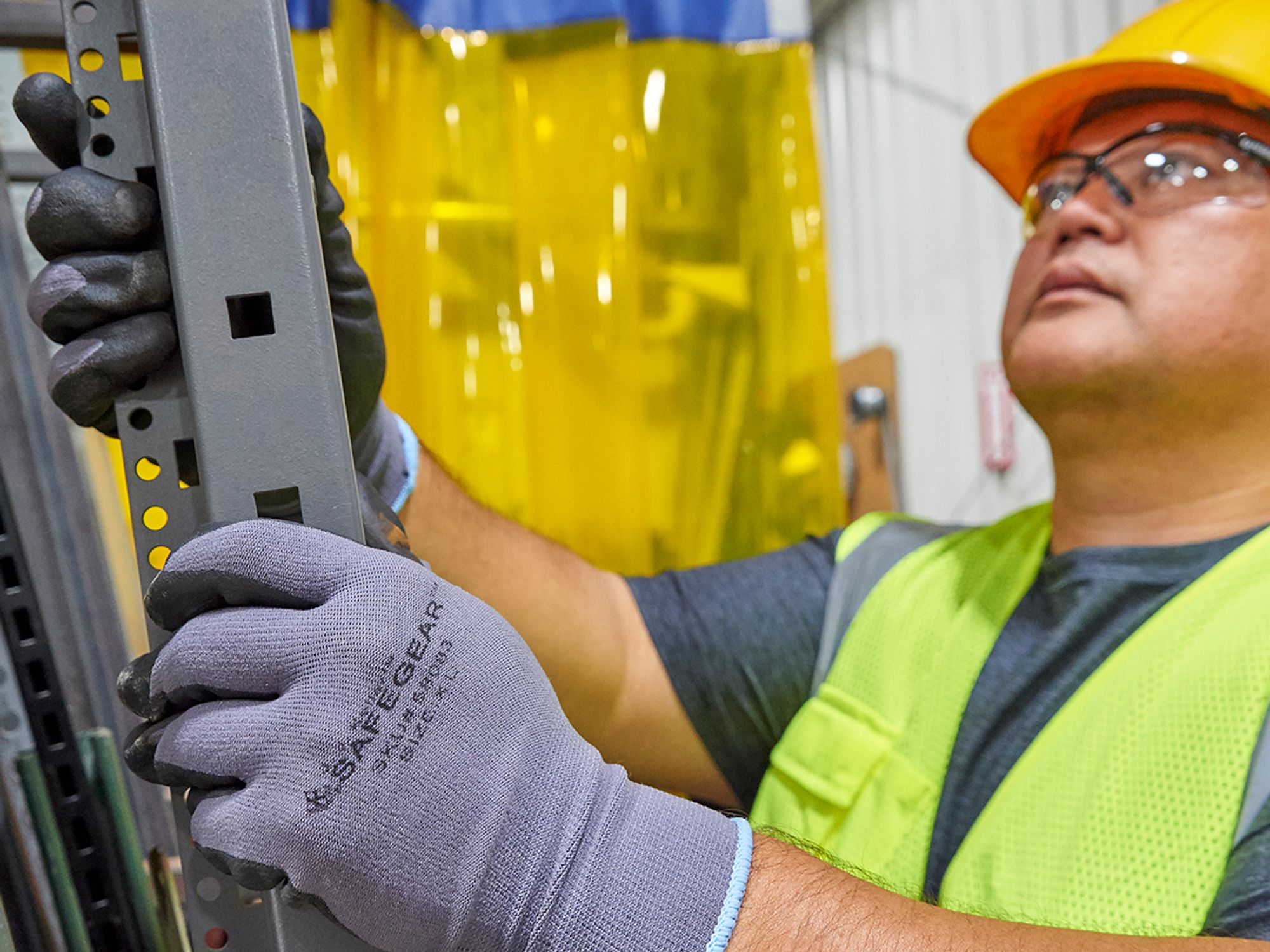Personal protective equipment

OSHA’s Subpart I regulations apply to all persons involved in hazardous processes; environmental, chemical, radiological hazards; or mechanical irritants that are capable of causing injury or impairment of any body part through absorption, inhalation, or physical contact. The categories of personal protective equipment (PPE) include: eye and face equipment, head protection, hand protection, foot protection, fall protection, and respiratory protection (information about respiratory protection is provided in a separate topic area under Respiratory Protection, 1910.134).
Action steps
- Assess the workplace to determine what hazards are present that require PPE.
- Document and certify the PPE assessment.
- Provide appropriate and approved PPE based on the workplace hazards.
- Instruct employees in proper PPE usage.
- Ensure employees wear proper PPE.
- Establish inspection and maintenance procedures for PPE.
Training action plan
OSHA requires that you provide training to each employee who is required to use PPE. Each such employee shall be trained to know at least the following:
- When PPE is necessary.
- What PPE is necessary.
- How to properly don, doff, adjust, and wear PPE.
- The limitations of the PPE.
- The proper care, maintenance, useful life, and disposal of the PPE.
Each affected employee must also demonstrate an understanding of the training and the ability to use PPE properly, before being allowed to perform work requiring the use of PPE.
When you have reason to believe that any affected employee who has already been trained does not have the understanding and skill required, you must retrain each such employee. Circumstances where retraining is required include, but are not limited to, situations where:
- Changes in the workplace render previous training obsolete.
- Changes in the types of PPE to be used render previous training obsolete.
- Inadequacies in an employee’s knowledge or use of assigned PPE indicate that the employee has not retained the requisite understanding or skill.
Tips
- Make sure that protective eyewear does not affect the fit of respirators.
- Make sure that protective eyewear does not disturb the proper positioning of corrective lenses so as to inhibit or limit the employee’s vision.
- Ensure employees disinfect shared protective eyewear after each use.
- Always replace a hard hat if it sustains an impact, even if damage is not noticeable.
- Don’t let workers wear hard hats backward unless the hat has been tested and approved for such use.
Checklist
Review these checklists to ensure proper PPE usage at your facility.
General
- Are all employees required to use PPE as needed?
- Is PPE functional and in good repair?
- Is protective clothing and equipment provided and used when cleaning up spilled toxic or otherwise hazardous materials or liquids?
- Is PPE provided and are all employees required to use PPE as needed to protect against injury?
- Does PPE have ANSI or ASTM specifications marked on it?
Training
- Has each individual who is required to use PPE been provided with training?
- Have the trained individuals demonstrated an understanding of the training and the ability to use PPE properly before being allowed to perform work requiring the use of PPE?
- Are individuals retrained when there is reason to believe that they do not have the understanding or skill to use PPE properly?
Recordkeeping
- Have you documented that a hazard assessment has been done, when, and by whom?
- Have you documented that PPE training has been done, who has received it, and when?
Head, foot, and hand protection
- Are protective helmets used wherever there is the possible danger of head injury from impact, or from falling or flying objects, or from electrical shock and burns?
- Is protective footwear used wherever there is the danger of foot injuries due to falling or rolling objects, or objects piercing the sole, and where feet are exposed to electrical hazards?
- Are appropriate protective gloves used wherever there is the danger to hands of exposure to hazards such as those from skin absorption of harmful substances, severe cuts or lacerations, severe abrasions, punctures, chemical burns, thermal burns, and harmful temperature extremes?
Eye and face protection
- Are individuals issued and required to wear appropriate eye protective devices while participating or observing activities which present a potential eye safety hazard?
Personal fall protection
- Have all impacted individuals been trained to use personal fall protection equipment?
- Is the equipment inspected daily before use?
- Does fall protection meet the design requirements in 1910.140?
- Are ropes, belts, lanyards, lifelines, and harnesses used for personal fall protection compatible with connectors used?
Posting requirements
- Are all areas and equipment requiring the use of PPE devices posted with a sign indicating this requirement?
